Loading page header ... or Your browser does not support JavaScript
Previous page <> Next 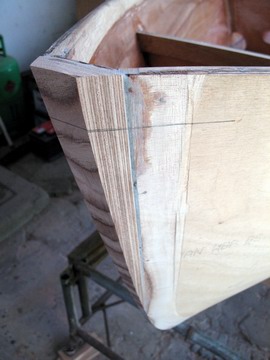 |
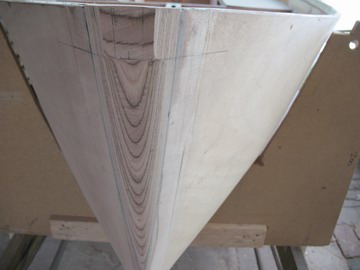 |
| Stem has been faired and shaped 'square'. Pencil line shows where outwale requires built up stem to stay flat. | Built up stem after rounding off. This is done by a similar process as used in making round spars. There it is called eight-siding. Once the first set of chamfers is done it is easy to sand to round. |
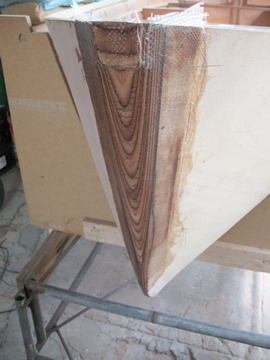 |
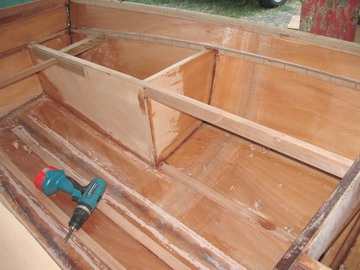
|
| Rounded off stem has been glassed. Upper joins of transom/hull topside are done at that time too, so the outwale can be glued on later over the glass. This preserves joint integrity. | Buoyancy box and mid-bulkhead are linked with a strong bearer to carry longitudinal seat top. |
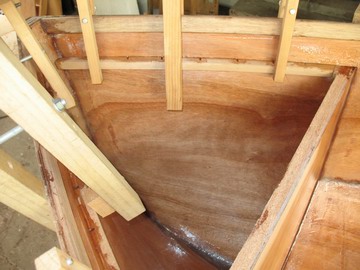 |
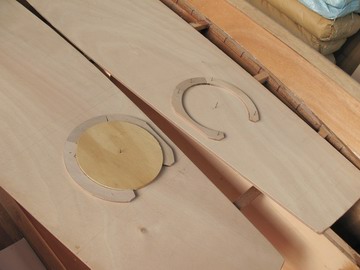
|
| Foredeck cleats being glued to topsides using long timber cramps. | Longitudinal seat tops are fitted on the underside with a doubling for the inspection hatch cut-outs. |
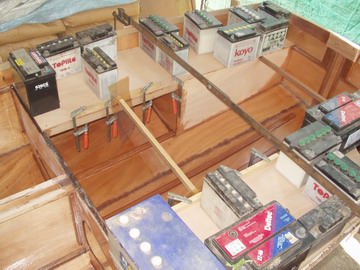 |
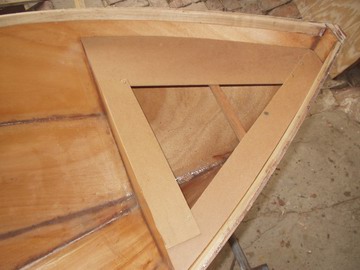
|
| Seat tops being glued to sub structure using a combination of temporary screws and weights. | Foredeck template made up of three strips of hardboard. This way one only has to fit up one outside curve and it uses very little hardboard! |
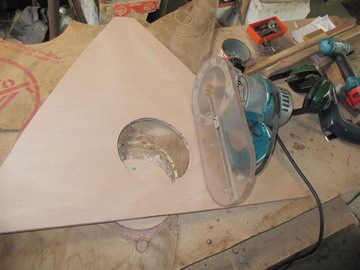 |
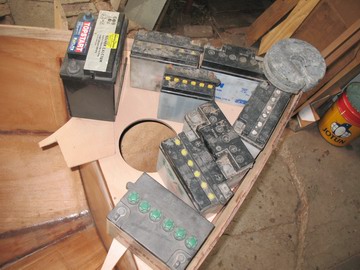 |
| The opening for the inspection hatch in the foredeck has been cut with the circle cutting attachment on the router. Doublers have been glued on as for longitudinal seat tops. | Foredeck being glued on. Weights and temporary screws being used as for longitudinal seat tops. |
Top of Page
Loading first page footer ... or Your browser does not support JavaScript
Loading second page footer ... or Your browser does not support JavaScript